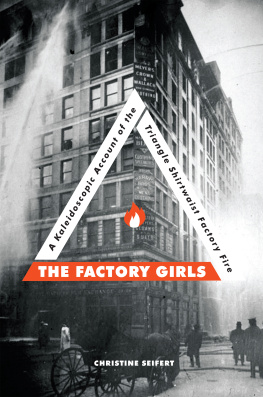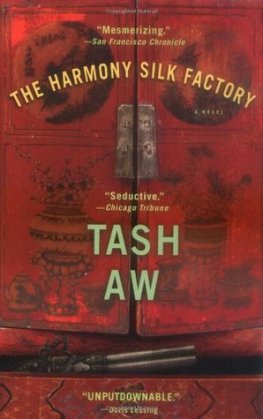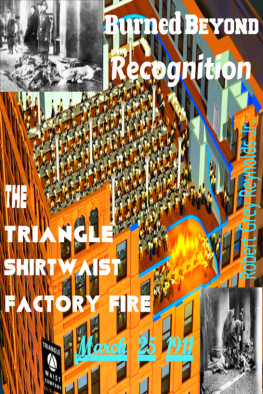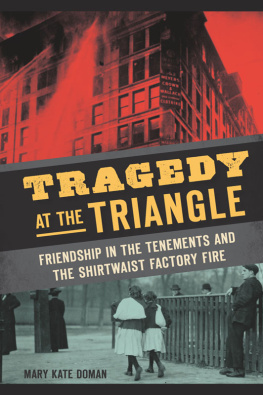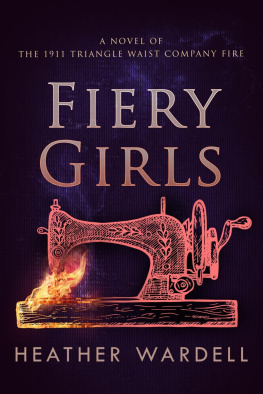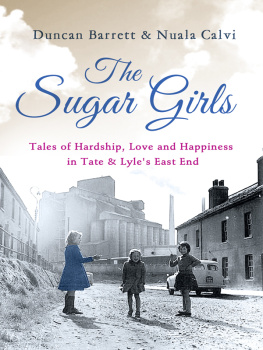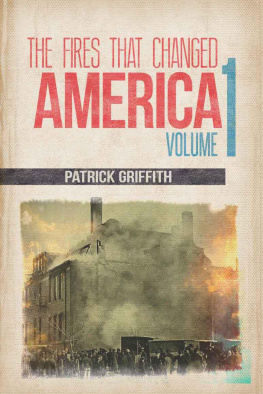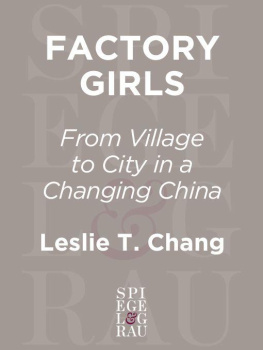An imprint of Lerner Publishing Group, Inc.
2017 Christine Seifert | All rights reserved. No part of this book may be reproduced, stored in a retrieval system, or transmitted in any form or by any meanselectronic, mechanical, photocopying, recording, or otherwisewithout the prior written permission of Lerner Publishing Group, Inc., except for the inclusion of brief quotations in an acknowledged review. | Juvenile Nonfiction / Girls & Women | ISBN: 978-1-942186-45-8 | Design: Adam Grano
Prologue
The Triangle Shirtwaist Factory fire of 1911 remains one of the worst workplace tragedies in American history. I first read about the fire my freshman year in college. I vividly remember sitting in the dining hall at lunch, opening my history textbook, and quickly becoming too absorbed in the story to eat my turkey sandwich. The book included only a couple of paragraphsjust a few measly lines to set up a longer section about labor policy in the Progressive Era. But I was desperate to know more: Who were these girls, and how did they end up in that New York City factory on March 25, 1911? What must life have been like for a factory girl in the early 1900s in America? And how do we make sure the factory girls story is never forgotten? This book is an attempt to answer those questions.
But first, a few notes about how I went about researching this story. There is, fortunately for us, a rich array of primary and secondary sources that provide insight into the lives of the girls who worked in the Triangle Shirtwaist Factory. All the information in this book comes from multiple primary and secondary sources. (Youll find a complete reference section and suggestions for further reading at the end.) I, like anyone else who has written about the Triangle fire, am indebted to Leon Stein in particular. His 1985 book, The Triangle Fire , is a gold mine of primary source accounts, including oral histories. His work also informed an unparalleled online repository at Cornell University: http://trianglefire.ilr.cornell.edu/index.html. This website is a fantastic resource for anyone seeking to learn more about the Triangle tragedy. All the information I present that is directly related to the fire itself comes from Steins book and the Cornell site. In some cases, I relied on books published after Steins, including David von Drehles Triangle: The Fire That Changed America (2003) and Albert Marrins Flesh and Blood So Cheap: The Triangle Fire and Its Legacy (2011). These materials were critically important for my understanding of the fire, its victims, and the aftermath.
When sources disagreed, I generally went with Leon Steins facts, except in cases where he was drawing from newspaper accounts. As von Drehle warns, newspaper reporting was often unreliable; publishers were eager to get stories out before reporters had proper and sufficient information. Youll find that, whenever necessary, I specify if a disagreement among sources stemmed from bad reporting.
Even with all the useful resources about the fire, details about the victims were often hard to find. Cornells site was useful for biographical information. I also relied heavily on Ancestry.com and Ellis Islands immigration records. If I could, I would write the story of every girl in the factory, but biographical information is very hard to find, and in some cases the task is impossible. When I was able to access biographical information, I tried to paint as clear an image of the girls life and background as I possibly could. In instances where I couldnt be sure about specific facts of day-to-day life, I indicate that I am hypothesizing based on historical research.
This book presents the story of five Triangle Factory workers: Annie Miller, Bessie Gabrilowich, Rose Rosenfeld, Fannie Lansner, and Kate Leone. Youll meet them in Chapter 1, where youll learn about their families and their backgrounds. Youll also see exactly where they were in the factory that afternoon the fire broke out.
In Chapters 2 and 3, well leave our heroines for a bit to learn about what was happening in America that led to the expansion of factory-produced consumer goods. Well start in the late 1800s to learn about the rise of consumerism and marketing, both of which led to mass production in the early 1900s. In Chapter 4, well look at immigration patterns in the later 1800s and early 1900s to understand why people were rushing to America at this particular time in history. In Chapter 5, well learn about the political and cultural climate then and how it foreshadowed troubling economic inequities, and why, as a result, labor unions formed to fight against unfair wages and unsafe working conditions. In Chapter 6, youll discover what a day in the factories was like. Chapter 7 explores the extent of corruption in the Gilded Age and beyond that led to the factory conditions. In Chapters 8 and 9, youll read about people who formed unions and fought against unfair labor practices.
In each chapter, youll meet girls from all walks of lifegirls who worked in factories, who married millionaires, and who led labor strikes. These vignettes are designed to give you a full picture of America at a pivotal moment in history. Most authors who have written about the Triangle fire focus on the progressive reforms prompted by the fire. While Ill certainly mention some of those reforms in workplace safety and pay equity, my goal is to present a thorough understanding of how culture, politics, labor policy, and economics came together to form conditions in which the Triangle fire was bound to happen. To do that, I refer back to the Gilded Age, a historical period that began around 1870 and lasted until about 1900. I spend a great deal of time exploring the Gilded Age to show you that the decisions that Americans madeabout what they wore and how they bought itslowly created conditions that culminated in the Triangle fire.
In Chapter 10, well return to our five heroinesAnnie, Bessie, Rose, Fannie, and Kateto learn what happened to them in the fire. Some survived; others did not. Well reflect on their legacies and the ways they impacted the larger world that surrounded them.
As youll see in Chapter 11, while American laws exist now to protect workers, companies often move their production offshore, where conditions are every bit as dire as those in early twentieth-century American factories. Youll read about some small ways you can help change the world by fighting against economic and labor policies that exploit workers in order to line the pockets of a few oligarchic companies. In some cases, you can make changes just by being more aware of your power as a consumer!
As you read, you might wonder why I often chose to call the young Triangle workers girls rather than women. Thats because I want to underscore the point that, for the most part, the people involved were still children. Many werent even teenagers yet. Even those who might be classified as women were heartbreakingly young. The term girl isnt meant to undermine any of the Triangle workers; instead, it is intended to recognize that the people most affected by the Triangle tragedy were very youngand that that was just one of the ways in which they were vulnerable.

